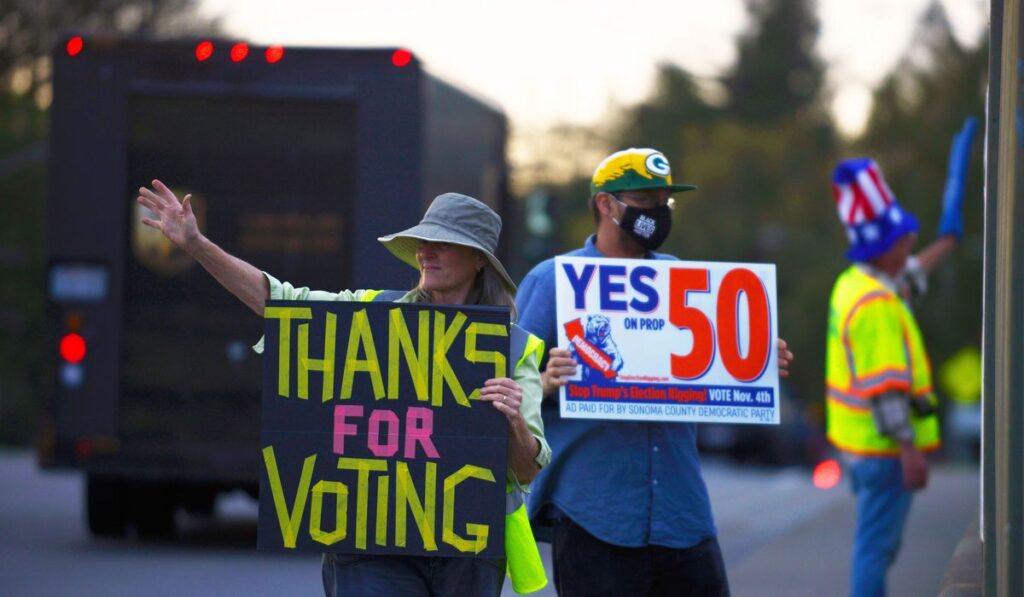California voters approved new congressional district boundaries Tuesday, handing Democrats a clear win in the state-by-state redistricting fight that will influence which party controls the U.S. House.
The measure passed on Tuesday reshapes California’s congressional map and gives Democrats an edge in a crucial battleground for House control. Voters in the state signed off on lines that party strategists say will shore up Democratic incumbents and make several competitive seats tougher for Republicans. That shift matters because a single state’s redistricting can ripple through national power calculations.
From a Republican perspective, this outcome highlights how high the stakes have become when maps are redrawn. Redistricting is no longer a routine administrative task; it is a major political event where the rules determine who gets a fair shot at representing voters. Conservatives argue the process too often favors the party with more influence in state politics, and this result underscores that concern.
Critics on the right worry that the new maps will dilute conservative voices in parts of California that used to be competitive. Packing and cracking voters into safe districts is an old play by both parties, but in deep-blue states like California it increasingly looks designed to lock in one-party rule. That raises questions about whether voters, rather than party operatives, will really decide the outcomes in future elections.
The timing of this approval matters because control of the U.S. House can hinge on just a handful of seats nationwide. California’s delegation is large enough that changes there can flip the balance or make it much harder for one side to gain traction. Republicans see this as a warning sign: even strong candidates may struggle if the electorate is grouped into districts that favor Democrats by design.
There are also broader governance concerns tied to how districts get drawn, not just the lines themselves. Transparency, public input, and consistent rules are the kinds of guardrails that backers on the right say would restore some balance. When the process looks opaque or tilted, it corrodes trust in elections and pushes more people to view outcomes as predetermined rather than earned at the ballot box.
Legal challenges are often part of the redistricting aftermath, and this cycle is unlikely to be different. Courts can and sometimes do alter maps when they find illegal discrimination or procedural flaws, but litigation is slow and expensive. Republicans see the courtroom as a last resort and prefer institutional reforms that prevent mapmakers from drawing lines that stack the deck from the start.
Even with the new boundaries in place, political dynamics can shift quickly because demographics and voter behavior change over time. Local issues, candidate quality, and turnout strategies still matter and can produce surprises. Yet the structural advantage baked into a map can make comebacks harder and force tougher electoral math for challengers.
Ultimately, this decision in California spotlights a national debate about how to balance representation and fairness in a polarized era. Republicans will keep arguing for clearer standards, more independent oversight, and rules that stop parties from engineering wins before campaigns begin. Until those changes happen, each state map approval will be more than a local story — it will be a strategic move in the long game for control of Congress.



